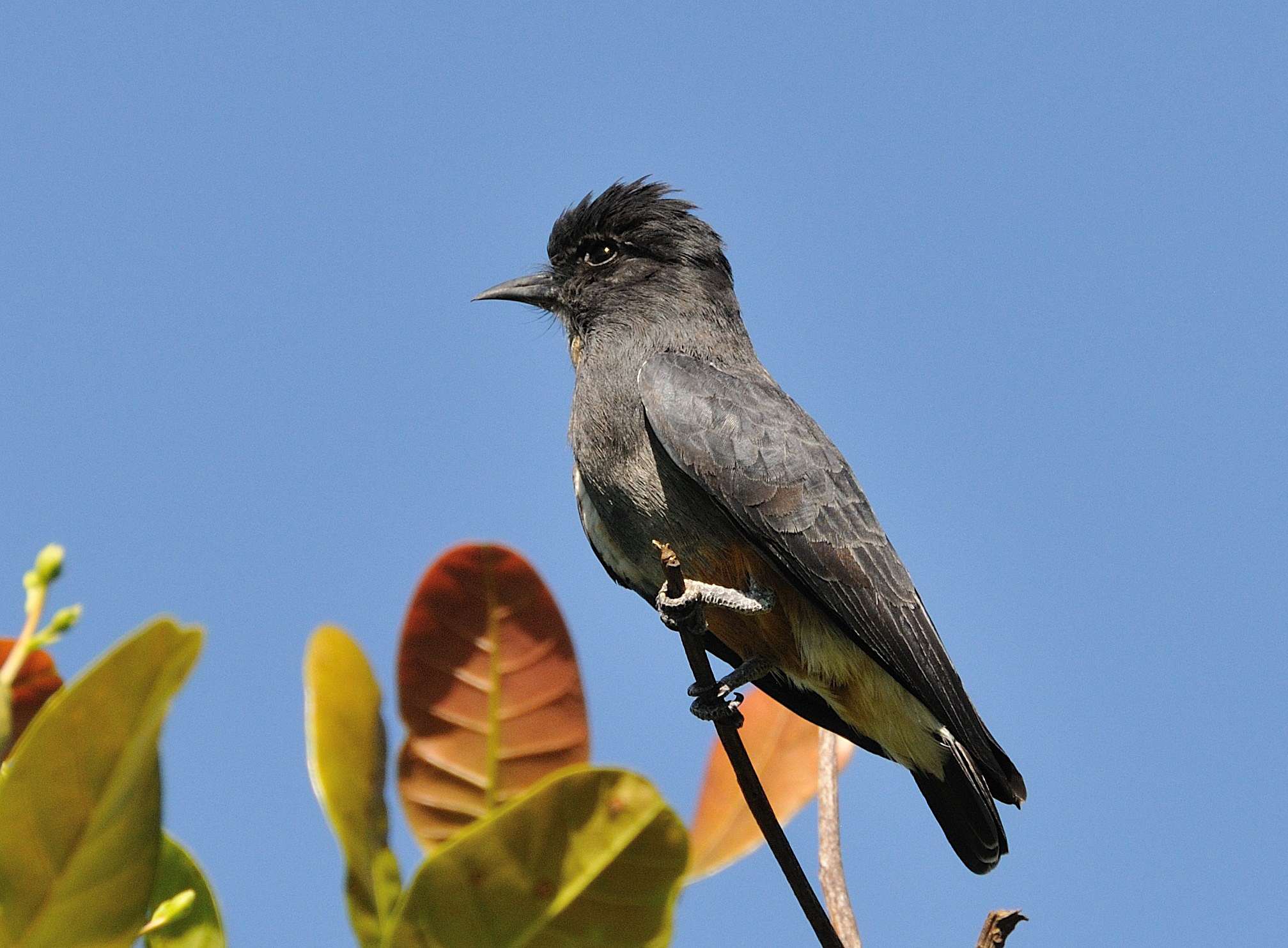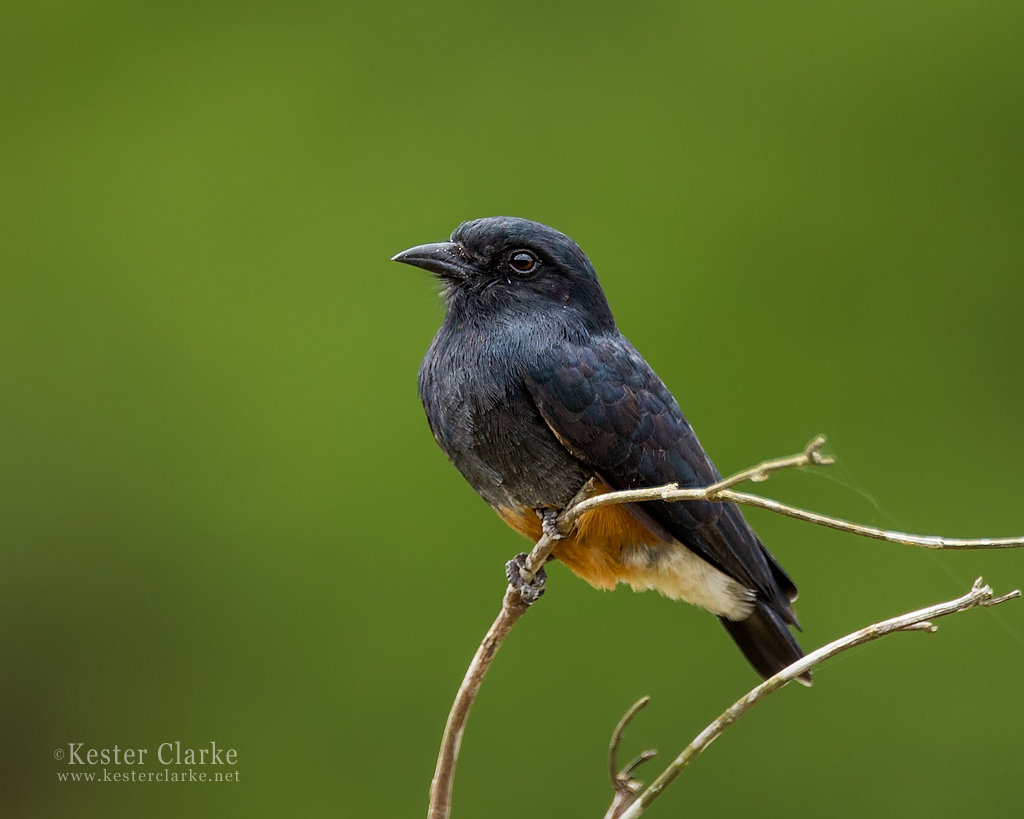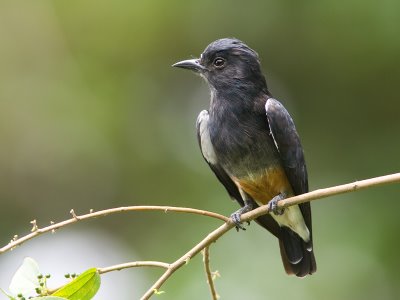
Chelidoptera tenebrosa
TAXONOMY
Cuculus tenebrosus Pallas, 1782, Surinam. Three subspecies.
OTHER COMMON NAMES
English: Swallow wing; French: Barbacou а croupion blanc;
German: Schwalben-faulvogel; Spanish: Buco Golondrina.
PHYSICAL CHARACTERISTICS
5.5–5.9 in (14–15 cm); 1.1–1.5 oz (30–41.5 g). Quite small with
relatively pointed wings. Mostly sooty black, with large white
area on lower back, and chestnut on lower underparts. Bill
short and black.
DISTRIBUTION
C. t. pallida: northwest Venezuela; C. t. tenebrosa: Venezuela
(except northwest), eastern Colombia and the Guianas south to
eastern Ecuador, eastern Peru, Amazonian Brazil, and northern
Bolivia; C. t. brasiliensis: coastal southeastern Brazil.
HABITAT
Recorded in wide variety of mostly open habitats 0–5,740 ft
[0–1,750 m]), but prefers open sandy areas with scattered trees
and bushes near forest.
BEHAVIOR
Spends most time in pairs or small groups, perched high up in
bare branches of emergent trees or other vantage points, from
which it flies to catch prey. It can stay aloft for prolonged periods,
leisurely circling, stalling, then swooping after passing prey
before gliding to a perch. In flight it vaguely resembles a martin
(Hirundinidae) or, more closely, a wood swallow (Artamidae).
FEEDING ECOLOGY AND DIET
Diet is entirely composed of bees, wasps, flying ants (Hymenoptera),
alate termites (Isoptera), and other insects caught
and consumed in flight.
REPRODUCTIVE BIOLOGY
One to two eggs laid in cavity at end of burrow dug into level
sand or earth banks, frequently beside rivers. Incubation and
nestling periods undocumented.
CONSERVATION STATUS
Not threatened. Common and conspicuous throughout much
of range, and favored by moderate deforestation.
SIGNIFICANCE TO HUMANS
None known.
Other popular Animals
Photo Gallery of - Swallow-winged puffbird




 Animalia Life
Animalia Life